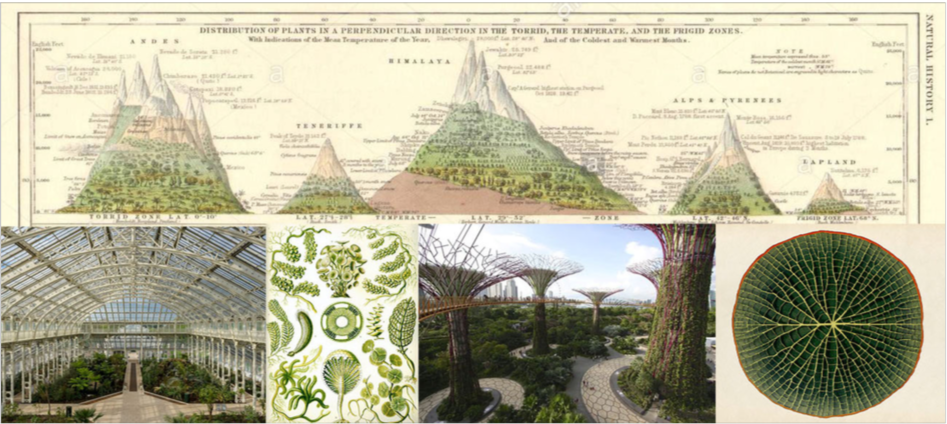Seeds & Weeds: The Knotty Natures of Botanic Gardens
LA 780-002
Karen M'Closkey
Friday 1:00-4:00 PM

Seeds & Weeds: The Knotty Natures of Botanic Gardens
Department of Landscape Architecture
Botanic gardens may seem a quaint relic at best (Sunday strollers, twirling parasols) or, worse, an outmoded typology (along with zoos and archeology museums) with a sordid history of pillaging and empire building. One could surely argue that these relatively small and bounded spaces are irrelevant in the face of rapid biodiversity loss, massive urbanization, and resource depletion. However, botanic gardens are a locus from which to understand the myriad political, economic, scientific, and social interactions that are central to the discipline of landscape architecture. Botanic gardens combine the science of botany and the art of display as a means to educate, and thus are a useful lens through which to see our changing relationship to nature vis-à-vis plants and plant collections, as well as their representations.
There are upwards of 2500 botanic gardens worldwide, attracting half a billion visitors per year. This is a staggering statistic. These gardens are often in urban areas and are, therefore, accessible to large numbers of people. Unsurprisingly, botanic gardens are not evenly distributed throughout the world, as they are intertwined with the history of colonization, particularly British and Dutch empires. They began as medicinal gardens and were the locus of early scientific research and invention. This scientific mission continues today as botanic gardens evolve to become leaders in conservation efforts. The Botanic Gardens Conservation International is working toward the goals set out by the United Nations Secretariat of the Convention on Biological Diversity’s Global Strategy for Plant Conservation (GSPC). Some of the key objectives of GSPC are education, communication, and public awareness programs about plant diversity. Thus botanic gardens are taking on roles akin to other institutions, from governmental agencies to NGOs and other public-private partnerships. The mission and research foci of botanic gardens continue to adapt to reflect current social and ecological interests and values. What assumptions about conservation undergird the latest research efforts in terms of how these fit into ideas about the circulation of plants and seeds themselves, and also the circulation of nature as capital more generally via botanical garden tourism?
This course will consider the history and the evolution of botanic gardens, focusing on key terms that are at the root of this type of garden and its links to much broader questions about nature and classification. We will look at design precedents by landscape architects, and make visits to nearby botanic gardens. The course will be structured according to the following themes, with readings and guest lecturers from Botany, the History of Science, and Anthropology: Colonization, Classification, Cultivation, and Conservation.
Please contact the instructor (mcloskey@design.upenn.edu) if you are interested in taking this course and are not a student in the Stuart Weitzman School of Design.
